Characteristics and advantages of TechnoNICOL heaters
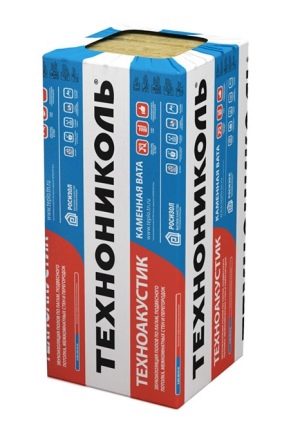
The TechnoNIKOL company produces a wide range of products for construction. Thermal insulation materials of the Russian trade mark stand out from their counterparts and have a number of advantages. The development of materials is carried out with the introduction of innovative technologies. This is reflected in their quality and explains the demand in the market.

Peculiarities
The products of the Russian corporation are known far beyond the borders of the country. Thermal insulation materials are developed according to the needs of different climates. They are different in terms of operating conditions and construction conditions. However, almost all types of thermal insulation raw materials meet building codes and requirements for fire resistance, as well as environmental friendliness.
The range of materials for insulation is wide enough. Each buyer has the opportunity to choose an option, taking into account their financial capabilities. Despite the general indicators, the level of thermal insulation differs from line to line. Some of them are more effective than others. Thermal conductivity depends on the composition of the material, its density.
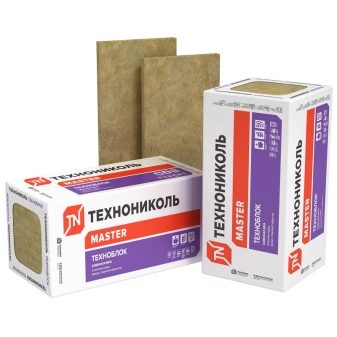

The main assortment of heaters is characterized by stability of characteristics throughout the entire service life. With a snug fit, not only the heat loss coefficient is reduced. The material reduces noise by absorbing sound. He does not allow it to spread further. The company is the only Russian manufacturer of wedge-shaped thermal insulation. It manufactures kits for wedge-shaped roof sheathing, eliminating the formation of dead zones.
Installation of heaters of the company is carried out by means of special glue or dowels. The manufacturer has provided for convenient cutting if necessary. For this, you can use a common hand tool.
The company's heaters do not retain water. If it hits the surface, it has no time to condense. Water vapor is discharged outside, the structure of the insulation prevents its retention.
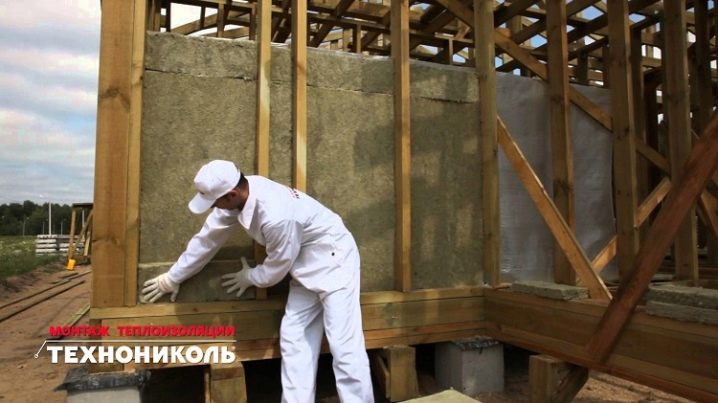
The thickness of the insulation is different. This contributes to widespread use in the construction industry. However, the basis is the main factor in choosing an option for insulation in each case. You need to buy a certain type of raw material. Some are better at insulating floors of different types (heated, floating). Others do not provide for a colossal load, they are designed for the roof. Others are more suitable for the reconstruction of buildings.
Certain materials reduce the design load on structural structures. They are characterized by rigidity. The presence of foil in other modifications excludes the ingress of moisture into the structure of the material. The company's products are antiseptic. It will not grow mold or mildew. It protects the bases and layers of structures from fire.


Advantages and disadvantages
Domestic products have many advantages:
- Low thermal conductivity... Heat loss in the premises will be minimized, which will be especially noticeable in the cold season.
- Resistance to deformation. During operation, the insulation does not shrink and does not change in size.
- No formaldehyde... Heaters of the trademark do not emit toxins into the air, therefore they will not harm health.
- Ease of installation. Thermal insulation with the corporation's goods is carried out quickly and does not require the involvement of outside specialists.
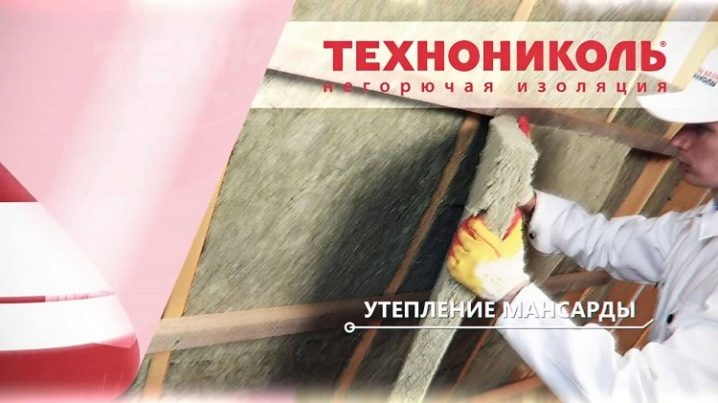
- Corrosion resistant. Heaters of the trade mark are passive for biological and chemical activity.
- Refractoriness... Thermal insulation "TechnoNICOL" is a kind of barrier for the spreading fire.
- Degradation resistance... Regardless of weather factors, brand insulation materials are not subject to decay.
- Sustainability to destruction by rodents and durability.
Depending on the variety, its service life is up to 50 years.

Heaters of the trade mark reduce the cost of heating the home. Regardless of the change in the temperature regime of external factors, the temperature of their surface will remain unchanged. No specialized equipment is required during installation. Some types of material can be installed on soft ground. Other options (for example, "Extra") are an intermediate layer for subsequent protective and decorative plastering using a special reinforcing mesh.

Each type of material from the manufactured assortment is tested for compliance with the established GOST standards for the main types of characteristics, which include:
- compressive and flexural strength;
- thermal conductivity in different conditions;
- water absorption;
- vapor permeability;
- flammability;
- flammability;
- toxicity level;
- operating temperature;
- geometric indicators (dimensions).
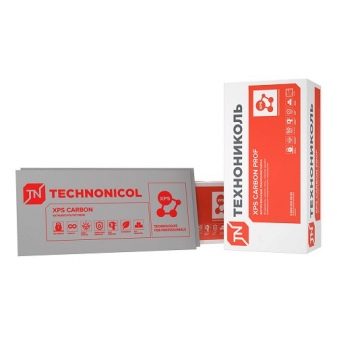

Each of the indicators is labeled with data and a mark with test values. This allows the buyer to get acquainted with the characteristics and choose the desired option for a specific base, regional climate, type of foundation and construction material. Any insulation of the brand is certified.
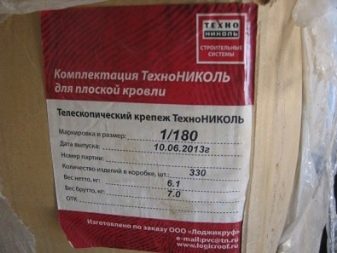

The disadvantages of some types of insulation include several factors:
- Some of them need to be protected from UV rays and precipitation during transport.
- They can be stored under a canopy in the open air. However, this is only allowed with secure packaging. In this case, a prerequisite is the presence of bars, pallets.
- After 10 years of operation, some types of thermal insulation material lose their original properties.
- Variants with a lower density in individual series are marked by structural heterogeneity. This is especially true for mineral wool.
- The difference in quality between budget and expensive types of material is obvious. In an attempt to save money, the quality of insulation and durability are lost.
- Do not use alkaline solutions on them.
In some packs, the first and last layers are thin, heterogeneous, so they are not suitable for insulation.
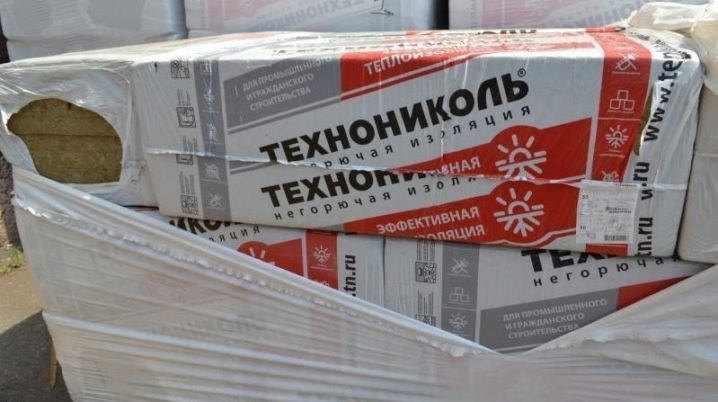
Specifications
Physical and mechanical characteristics determine the suitability of a particular material for the specific needs of the buyer. Plates differ in strength, slope, thickness and cost.
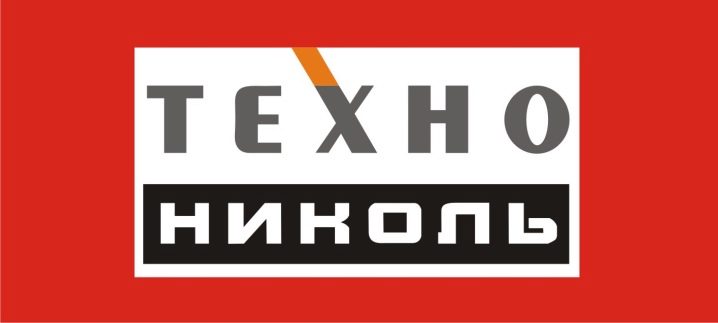
Fire resistance
Most of the insulation materials are non-flammable. The flammability group of raw materials has its own marks. For example, heat-insulating boards "Pir" for a bath and a balcony are marked with the G4 mark. Materials with fiberglass and foil lining have indicators G1 and G2.
Extrusion varieties "Eco" and professional insulation with carbon fiber have indicators G 3 and G4. At the same time, smoke generation and flammability are marked with D3 and B2 markings. "Techno" pierced materials are a non-combustible type of heat-insulating material for any material thickness (from 30 to 80 mm). Basalt-based and basalite-sandwich versions are marked with NG (non-combustible).


Thermal conductivity
The performance of each material is different. For example, the level of thermal conductivity is:
- technical heat insulators - 0.037-0.041 W / mS;
- extrusion analogs in the form of plates - 0.032 W / mS;
- thermal insulation boards "Pir" - 0.021 W / mC;
- basalt-based analogs - 0.038-0.042 W / mC;
- options for shipbuilding - 0.033-0.088 W / mS.

Density
The density of thermal insulation materials is different. For some types of products, it varies from 80 to 100 kg / m3.In general, the density range is 28 to 200 kg / m3. It directly affects the type of surface. For example, for inclined ones, it is better to purchase material with a thickness of 15 cm with a density of 35 to 40 kg / m3. If the indicator is less, the insulation may sag.
When it is necessary to insulate partitions, the density should be increased. Better if it is 50 kg / m3. The density of the material for the facade should be higher. Here you need an option in the range of 80-100, 150 kg / m3 and more. In this case, the thickness can be from 10 to 50 mm.



Composition
Collections of thermal insulators of the Russian company "TechnoNIKOL" have a different composition. For example, some varieties are made from mineral wool. The finest stone fibers are made from processed gabbo-basalt. Phenol is added to some varieties. The basis of a separate series is carbon. Due to it, the characteristics of heaters change. Other types are made from expanded polystyrene. Due to this, such options are lighter.



Release form
The company offers two types of insulation: in rolls and in the form of sheet material. The second type is thermal insulation made of rectangular sheets. For ease of transportation, they are sold in packages of several pieces. The number of sheets in a bundle may vary. It depends on the thickness of the insulation and its composition.
For the convenience of the buyer, the manufacturer indicates the number of square meters on the marking. This allows you to perform cladding of roll or sheet material, taking into account the specific parameters of the base.


Dimensions (edit)
In addition to the fact that the dimensions of roll and tile materials are different, the brand provides for a flexible approach to each client. On an individual order, you can make insulation in a different format, convenient for the customer. The dimensions of standard slabs are 1200x600x100, 1200x600x50 mm. The thickness of the material varies on average from 1 to 15 cm. The sizes of varieties with an edge are 1185x585, 1190x590 mm with a width of 20, 30, 40, 40 mm. The length range is from 600 to 12000 mm, the width is from 100 to 1200 mm.


Application
Depending on the type of thermal insulation, it is possible to use material from a Russian manufacturer for insulating buildings inside and out. It can be used for:
- pitched and flat roofs;
- walls, floor and ceiling of the house;
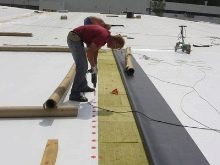


- wet and ventilated facade;
- upper floor and attic floor;
- insulation of the attic, cottage, dacha.
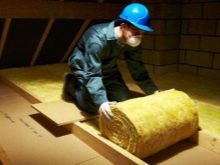


In fact, these materials are applicable for interfloor floors. In addition, they can be used for interior partitions and frame wall systems, as well as ventilated facades.

Payment
Every master and even a customer should know the rules for calculating insulation. Sometimes repair crews deliberately overestimate the figure. To avoid becoming a victim of deception, you can use an online calculator. However, you can do some simple calculations yourself. Density and approximate area covered are fundamental factors.
To make it clearer, you can take an illustrative example as a basis. It is planned to use 5 cm thick insulation. In this case, the size of the material is not yet taken into account. You need to find its total. The planned height of the facade is 3 m, its perimeter is 24 m.
Calculate the area: 3 * 24 = 72 m2.
The thickness of the insulation is converted into meters: 50 mm = 0.05 m.
Multiply the resulting square by the thickness: 72 * 0.05 = 3.6 m3.


After that, it remains to look at the packaging labeling. It usually has a volume in cubic meters written on it. It remains to divide the resulting indicator by this mark. For example, it is equal to the standard value of 0.36 m3. Then the number of packs is: 3.6: 0.36 = 10.
Thus, for 72 m2 with a material thickness of 5 cm, 3.6 cubic meters will go. m or 10 packs of insulation. In the same way, the consumption is calculated for multilayer insulation.
In order not to get confused in the calculations, proceed from the total thickness of the material. Knowledge cubem will allow you to approach the issue of buying the right amount with a big concept.


Views
The corporation manufactures products for interior and facade work. These are materials of roll and plate type. They are intended for insulation of the facade, roof, foundation and floor. The assortment of TechnoNICOL heat-insulating materials includes:
- stone wool products;
- fire-resistant and technical insulation;


- extruded polystyrene foam;
- heat insulating boards PIR;
- shipbuilding insulation.
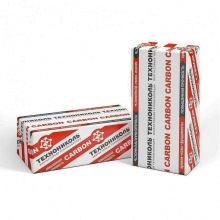


Each of the lines includes a wide range of thermal insulation materials.
Basalt
The line of materials based on stone wool consists of 41 types of thermal insulation products. It includes refractory hydrophobized mineral wool slabs based on basalt wool rocks. In addition to soundproofing properties, they differ in soundproofing. The purpose of the slabs is facade insulation with an air gap. They can be used for the top layer or in combination with other boards in the series.
The application is designed for low-rise construction, it is appropriate in shipbuilding. Plates can be used to insulate vertical, horizontal and inclined planes. This is an intermediate link in the decoration of attics, walls with frame systems, siding, partitions. The most popular materials in the series are:
- Technoacoustic;
- Technofas;


- Technoblok Standard;
- Technolight;
- "Basalit";
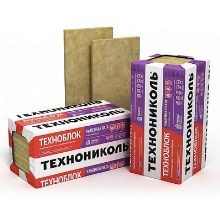
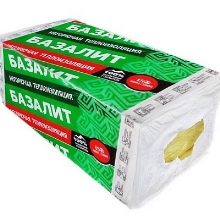

- Rocklite;
- Technoruf Extra.


Extruded polystyrene foam
The XPS series includes 11 types of thermal insulation materials "TechnoNICOL Carbon" and "Technoplex. The latter is a thermal insulation compatible with the "warm floor" system. It can be used for private housing construction and for thermal insulation of apartment buildings. Due to the graphite in the composition, the level of thermal conductivity decreases and its strength increases. These are slabs of a silvery tone with a layer thickness of 1-10 cm.
The TechnoNICOL Carbon series consists of the best products for home insulation, including the foundation. These are slabs with a rough surface and special rigidity. The facade version "Carbon Eco" is a slab with closed cells, evenly spaced over the entire surface of the insulation. They are characterized by better thermal conductivity, lightness, and are intended for insulating buildings made of aerated concrete, timber and other light frame buildings. The line includes a slope-forming insulation in the form of wedge slabs.
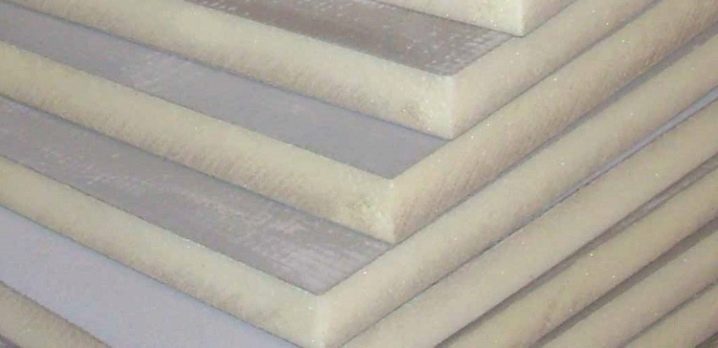
Popular materials in the series are:
- Carbon Solid (A, B);
- Carbon Eco;


- Carbon Prof;
- Carbon Eso Fas.


Thermal insulation boards
The series includes small thickness energy insulators with improved performance characteristics. They are intended for internal insulation of premises, suitable for external insulation of buildings. The line consists of 7 types of materials for insulation of wall and floor ceilings. They are appropriate for the insulation of baths, saunas, balconies, loggias, practically have no water absorption.
Floor materials provide for laying under a different topcoat. Fiberglass varieties can be used for flat roofs using the adhesive fixation method. It is a roofing material in the form of slabs with edges, although it can also be used for plaster facades.
Unlike a material with a fiberglass lining, a foil-clad analog, in addition to insulating walls, can be used to insulate pitched-type roofs.

The most demanded materials in the series are:
- "Logicpir";
- "Logicpir bath";


- "Logicpir Wall";
- "Logicpir floor".


Fire resistant and technical
The series includes about 10 different types of insulation. These are roll products and options in the form of plates. A distinctive feature of the line is its focus on industrial facilities. The specificity of these materials is to impart fire resistance to reinforced concrete bases, heat insulation of metal structures.In terms of structure, the materials are non-combustible insulators of a technical nature based on mineral wool from basalt and a low-ferol component.
The line includes varieties with a foil-coated type and an analogue of fiberglass. Roll options are thermal insulation of pipelines. They are distinguished by the presence of a self-adhesive overlap for the convenience of self-assembly. Mats of the series are used for air ducts, boilers and various power equipment. The varieties differ from other lines in a large range of temperature conditions of operation.

The demanded raw materials of the line are:
- "Mat Techno"
- "Stove Techno OSB";
- "Stove Techno OZM";
- "Stove Techno OZD";
- Techno T.

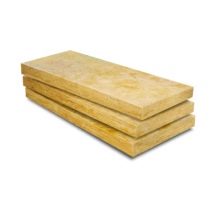

Installation technology
The installation of a trademark insulation depends on the type of base, its preparation and the type of work in general. Before starting construction work, you need to complete all the main work inside the building. Window and door openings must be ready, as well as the roofing device. The standard installation is as follows:
- They prepare the necessary inventory, purchase thermal insulation and the necessary components.
- Prepare the surface carefully. It is leveled, then removed from dust and dirt. It is especially important to remove grease stains if glue fixation is planned.
- The surface is primed with subsequent drying, then a profile is fixed, the width of which corresponds to the thickness of the thermal insulation.

- After that, you need to apply glue to the back of the insulation pointwise or in stripes over the entire surface.
- Then it is necessary to correctly lay the slabs mechanically on the profile frame, not forgetting to fasten them together.
- After that, a waterproofing layer is installed. To do this, use a special film, put it on the frame at a distance of 2-4 cm from the insulating material.
- Carry out finishing or plating.

Reviews
The brand's products have conflicting reviews from buyers and owners of private buildings. The presented conclusions about the manufacturer are based on the opinions of buyers and professional craftsmen in the field of construction. Insulation materials "TechnoNICOL" are an excellent product worth buying, - the masters say. However, the choice must be correct.
The desire to save money leads to the selection of the wrong material, which affects the durability and performance of the brand's heat insulators. Professional craftsmen note the importance of taking into account the base and thickness.
Thermal insulation is distinguished by its density and characteristics. Therefore, according to them, the same types of material cannot be used in different places.

You can learn how to insulate a house with TechnoNICOL stone wool by watching the video below.













The comment was sent successfully.